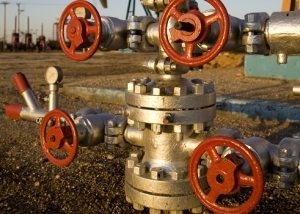Pumping and transportation of gaseous and liquid media through special pipes is possible only with pressure control and periodic flow stop. This is done automatically or mechanically, but always using shutoff valves. Regulating devices differ in functionality, constructive solution, but any shutter with an electric actuator or manual control has its own characteristics, pluses and minuses.

Electric shutters greatly facilitate the adjustment of the flow of the working medium in the pipeline
Key features and operating principle of shutters
Butterfly valves operate according to the general principle, but are constantly equipped with new options that facilitate operation. The main element is made in the form of a disk with volumetric edges, and it is controlled with the help of a "butterfly" - a locking element. The hole inside the pipe decreases or increases when you turn the disk shutter. It rotates around an imaginary axis, regulating the volume of the transported medium.
A rotary element is a type of flapper or valve. A simple device allows you to control the flow intensity:
- completely overlap;
- reduce pumping volumes;
- increase feed to maximum.
Good to know! Technical requirements for shut-off valves are described in GOST - 4666-75, 2.785-70 and 24856-81.
Flow control inside the pipeline involves:
- enable / disable the supply of liquid and gaseous media;
- redistribution, regulation of flows;
- dumping residues and rebooting another media;
- mixing, phase separation of working environments.
An eccentric shutter or axial pressure valve, as specialists call it, is based on the type of rotation around its axis passing through the center or diameter of the disk. The axial rotation of the locking disc is the basis of the shut-off valve. But in some valves the axis exactly coincides with the largest valve diameter, in others it is offset, they are called eccentric.

Regulation of the flow of the working medium, termination and resumption of its movement is carried out using a disk rotating on the axis
Externally, the rotary assembly is a controlled valve in the critical section of the pipeline, but the regulator is located inside the pipe. Outside is a handle for controlling the operation of the locking unit. A butterfly valve for pipelines differs from similar devices in some ways:
- simple design and principle of operation;
- small size, light weight of the entire site;
- compact form;
- ease of installation;
- convenience in operation;
- maintenance of pipelines of different diameters.
The disadvantages include:
- limited functionality and scope;
- the need for a seal for tightness;
- the need for greater efforts to minimize flow inside the pipeline;
- the accumulation of impurities on the disk shutter mechanism.
In addition to the electric drive, the shutter valve is controlled in other ways:
- Lever or gear manually;
- Using hydraulics;
- On the pneumatics.
Electric Valve Operation
The use of an electrically operated rotary butterfly valve makes it possible to automate control of the control valve, as well as remote control of the shutter mechanism.
Important benefits:
- ensuring safe operation;
- synchronization of the functioning of all communication;
- reduction of efforts when adjusting the flow inside communications.
The excellent performance of the electric shutter and ease of operation simplifies any process and production process. Automation and synchronization of the operation of all pipeline shut-off mechanisms is carried out using a signal. Power supply to butterfly valves with electric actuators is carried out from the network with a standard voltage of about 220-240 V. It is also possible to recharge the actuator from a 3-phase network with a voltage of 380 V.
The electric drive has 2 varieties:
- single turn;
- multi-turn.
The choice of variety depends on several factors:
- diameter of the pipeline;
- transported medium;
- fluid pressure in the system.
Important! The operation scheme depends on the ratio of the working angle of rotation of the disk valve and the number of revolutions of the mechanism on the electric drive.
The electric shutter is an example of equipping a classic mechanism with automated options. It is convenient to use such control valves not only in the industrial sphere, but also for supplying gas, water, and heating at household facilities.






